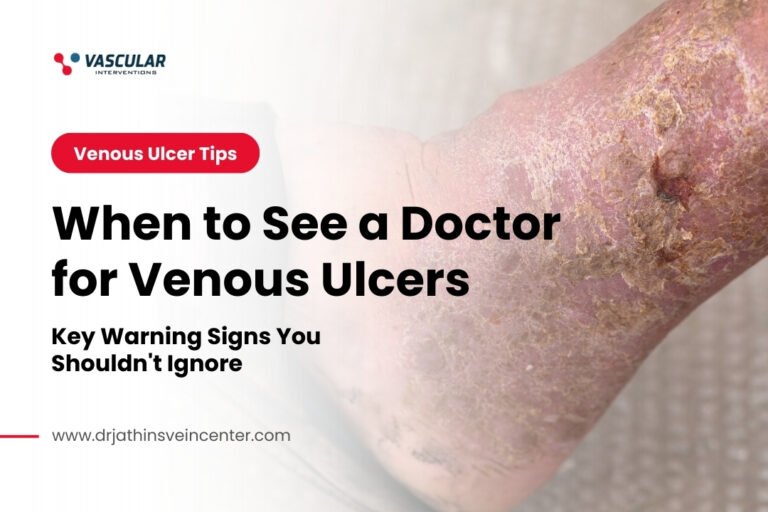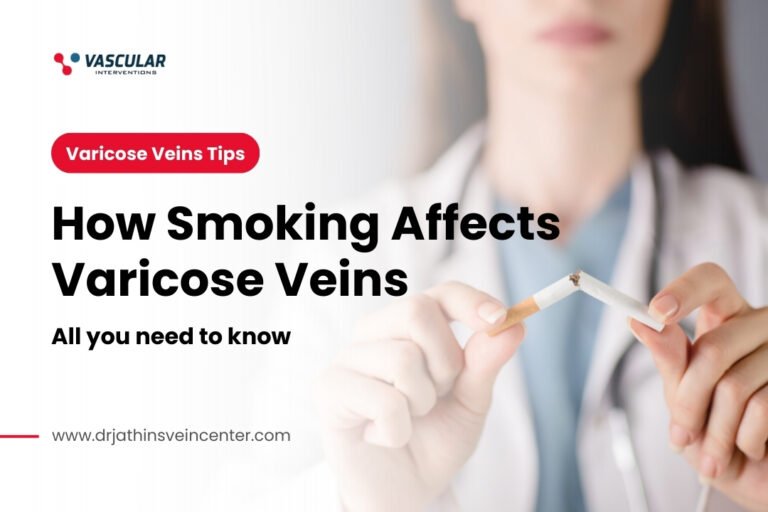When it comes to vascular diseases, many people may not realize that early diagnosis can make all the difference.
Conditions that affect your veins and arteries, such as varicose veins or peripheral artery disease (PAD), often develop slowly, with symptoms that may seem easy to ignore at first.
But without early detection and treatment, these diseases can progress into more serious problems, leading to complications like blood clots, ulcers, or even stroke.
The good news is that catching these issues early not only helps prevent long-term damage but also opens the door to more effective, less invasive treatment options.
In this article, we’ll explore why early diagnosis is critical for managing vascular diseases and how it can lead to better outcomes and an improved quality of life.
What Happens When Vascular Diseases Go Undiagnosed?
Vascular diseases often develop gradually, with symptoms that may seem mild or even go unnoticed in the beginning.
This can make it easy to delay seeking medical attention, but ignoring early warning signs can lead to serious complications over time.
When vascular diseases like varicose veins, deep vein thrombosis (DVT), or peripheral artery disease (PAD) are left undiagnosed, they tend to progress, potentially causing long-term damage.
For example, a condition like varicose veins might start as a cosmetic concern but, if left untreated, can lead to chronic venous insufficiency, ulcers, or blood clots.
PAD, on the other hand, can begin with leg pain or cramping, but without treatment, it increases the risk of heart attack or stroke.
The key problem is that many vascular diseases progress silently. By the time noticeable symptoms develop, the condition may have already advanced, requiring more complex and invasive treatments.
Early detection is crucial because it allows your varicose veins doctor to manage the disease before it causes permanent damage or life-threatening complications.
Now that we’ve covered the risks of delayed diagnosis, let’s explore why catching vascular diseases early can lead to better outcomes.
Why Early Diagnosis is Crucial
Catching vascular diseases early can make all the difference in how they’re managed and treated.
Early diagnosis not only helps prevent serious complications but also gives patients more treatment options and a higher chance of better outcomes.
1- Prevents Disease Progression: When diagnosed early, conditions like varicose veins or peripheral artery disease (PAD) can be managed before they worsen.
This can prevent issues like painful ulcers, blood clots, or serious cardiovascular events.
2 – More Varicose Veins Treatment Options: Early-stage vascular diseases often have less invasive treatment options available.
For instance, compression therapy or lifestyle changes might be enough for varicose veins in the beginning, whereas more advanced cases may require varicose veins laser treatment, surgery or more complex interventions.
3 – Improved Prognosis: Early detection in any disease typically leads to better long-term outcomes.
Treating varicose veins in their initial stages can prevent the need for emergency treatments later on and improve your overall quality of life.
4 – Minimizes Discomfort: Conditions like varicose veins or chronic venous insufficiency often come with uncomfortable symptoms—leg pain, swelling, and heaviness.
Addressing these issues early can help minimize discomfort and prevent worsening symptoms.
By diagnosing vascular diseases early, patients can avoid many of the complications that come with untreated conditions, while also ensuring a quicker, more comfortable recovery.
Signs and Symptoms You Shouldn’t Ignore
Early diagnosis starts with knowing what to look for.
While some vascular diseases progress quietly, there are common signs that could indicate a developing problem.
Paying attention to these symptoms can help you catch the disease early and get treatment before it becomes more serious.
Here are some key warning signs:

Leg Pain or Swelling: Persistent leg pain, swelling, or a feeling of heaviness can be early indicators of varicose veins or venous insufficiency.
Visible Veins: Bulging or twisted veins that become more visible over time should not be ignored, as they can indicate the start of more significant vascular issues.
Changes in Skin Color or Texture: Skin darkening, rashes, or sores around your legs and ankles can point to poor circulation and may be a sign of advanced vein disease.
Coldness or Numbness in Limbs: Experiencing cold or numb sensations in your arms or legs could be a sign of poor blood flow, potentially indicating peripheral artery disease (PAD).
Wounds that Don’t Heal: Slow-healing sores, particularly on the legs, can be a red flag for more severe vascular conditions.
If you’ve noticed any of the symptoms we’ve discussed, or if you’re concerned about changes in your vein health, it’s important to reach out to a varicose veins specialist. Early diagnosis can make a real difference in managing vascular diseases before they become more serious.
At Dr. Jathin’s Vein Center in Mumbai, our focus is on helping you catch these issues early with personalized screenings and treatments tailored to your needs. Taking action sooner rather than later can help prevent complications and improve your quality of life.
Don’t wait for symptoms to worsen — find a good varicose veins doctor near you and ask for professional guidance. Being proactive about your vein health is the best step toward long-term well-being.





